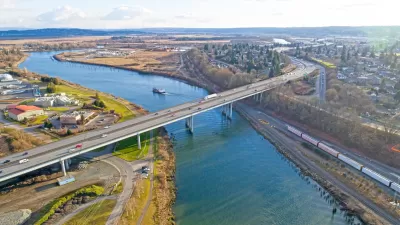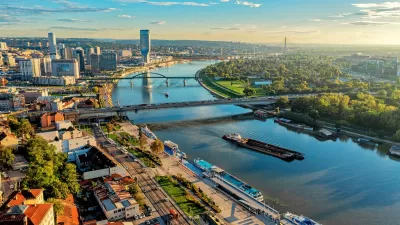Pollution is threatening the structural integrity of the Taj Mahal, prompting local officials to scramble for ways to preserve the historic site.
The nearby Yamuna River is plagued by pollution problems, and the soil beneath the Taj Mahal could be in danger of erosion.
"The Indian press has been filled with reports that the latest government efforts to control pollution around the Taj are failing and that the gorgeous white marble is deteriorating-a possible casualty of India's booming population, rapid economic expansion and lax environmental regulations. Some local preservationists, echoing the concerns of R. Nath, an Indian historian who has written extensively about the Taj, warn that the edifice is in danger of sinking or even collapsing toward the river. They also complain that the Archaeological Survey of India (ASI) has done slipshod repair work and call for fresh assessments of the structure's foundations.
The criticisms are a measure of how important the complex is to India and the world, as a symbol of historical and cultural glory, and as an architectural marvel. It was constructed of brick covered with marble and sandstone, with elaborate inlays of precious and semiprecious stones. The designers and builders, in their unerring sense of form and symmetry, infused the entire 42-acre complex of buildings, gates, walls and gardens with unearthly grace. "It combines the great rationality of its design with an appeal to the senses," says Ebba Koch, author of The Complete Taj Mahal, a careful study of the monument published in 2006. 'It was created by fusing so many architectural traditions-Central Asian, Indian, Hindu and Islamic, Persian and European-it has universal appeal and can speak to the whole world.'"
FULL STORY: How to Save the Taj Mahal?

Planetizen Federal Action Tracker
A weekly monitor of how Trump’s orders and actions are impacting planners and planning in America.

Map: Where Senate Republicans Want to Sell Your Public Lands
For public land advocates, the Senate Republicans’ proposal to sell millions of acres of public land in the West is “the biggest fight of their careers.”

Restaurant Patios Were a Pandemic Win — Why Were They so Hard to Keep?
Social distancing requirements and changes in travel patterns prompted cities to pilot new uses for street and sidewalk space. Then it got complicated.

Platform Pilsner: Vancouver Transit Agency Releases... a Beer?
TransLink will receive a portion of every sale of the four-pack.

Toronto Weighs Cheaper Transit, Parking Hikes for Major Events
Special event rates would take effect during large festivals, sports games and concerts to ‘discourage driving, manage congestion and free up space for transit.”

Berlin to Consider Car-Free Zone Larger Than Manhattan
The area bound by the 22-mile Ringbahn would still allow 12 uses of a private automobile per year per person, and several other exemptions.
Urban Design for Planners 1: Software Tools
This six-course series explores essential urban design concepts using open source software and equips planners with the tools they need to participate fully in the urban design process.
Planning for Universal Design
Learn the tools for implementing Universal Design in planning regulations.
Heyer Gruel & Associates PA
JM Goldson LLC
Custer County Colorado
City of Camden Redevelopment Agency
City of Astoria
Transportation Research & Education Center (TREC) at Portland State University
Camden Redevelopment Agency
City of Claremont
Municipality of Princeton (NJ)





























